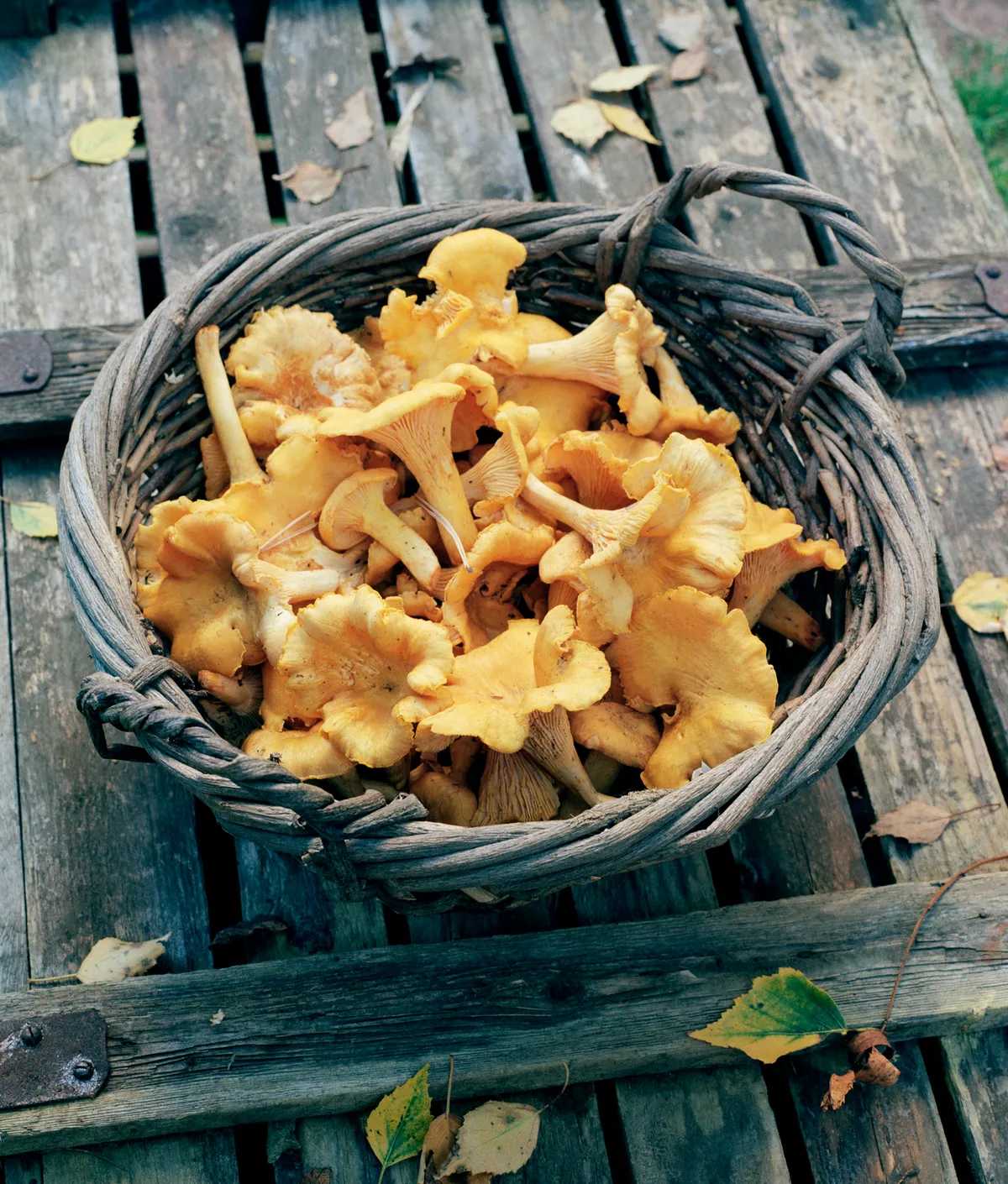Our guide on how and what to forage for in November in Britain, with a few key details regarding where each plant can be found, characteristics and recipe ideas.
Where to forage in November
Head to the woods this month for mushrooms, berries and some young leaves that are hardy enough to withstand the winter frosts. Gather your chestnuts here for the freezer, or roast them now for a seasonal treat! Why wait until Christmas?
How to forage safely and responsibly
Whether you're a seasoned forager or a complete newcomer, there are some golden rules you need to be aware of before you begin. Check out our beginner's foraging guide to learn how to forage safely and responsibly throughout the year.
Beginner's Guide to Foraging, with monthly guide to what's in season
Getty
Best edible plants, nuts and berries to forage for in November
Oyster mushrooms

Appropriately named, this fungus looks just like a cluster of oysters. Normally growing in shelf-like layers on dead deciduous wood with caps of about 4-15cm, these mushrooms have white, hairless gills and a stubby stalk. Oyster mushrooms are often still to be found in November or even December if it has been mild. Take a very good mushroom guide with you for identification and check with an expert if you have any doubts.
Chickweed

Another tough weed that can withstand the cruel winter months, chickweed has oval leaves with pointed ends that are smooth and slightly hairy. Most commonly found in fields and on forest floors, chickweed can grow between 5-50cm tall and its leaves can be used in winter salads, sandwiches, soups and stews.
Navelwort

Navelwort gets its name from its leaves’s resemblance to belly buttons. It can survive the long dark winters and provides a tasty addition to salads and sandwiches. But be sure to pick the younger leaves as the more mature ones can taste bitter. Navelwort is usually to be found peeking out of gaps and cracks in damp walls.
Winter chanterelles

This is another foraging delight that continues to soldier on throughout November and into December, particularly in milder areas. They have funnel shaped brown caps of around 3-7cm across, flimsy flesh and a distinctive yellow stalk. Find them in woodland and on moss or decaying wood. Take a very good mushroom guide with you for identification and check with an expert if you have any doubts.
Hawthorn

Hawthorn berries are best picked when they are most ripe, which usually means the beginning of November. Hawthorns are dense and, unsurprisingly, thorny. The berries are red and fairly similar to rosehips in appearance. Foraging the berries can be time-consuming as they often bring with them lots of stem when picked which need to be removed. Hawthorn jelly is a simple and delectable way to use your hoard. Boil 1.5lb (700g) of berries with 1.5 pints (700ml) of water until soft (you may have to mash the berries a bit), then strain through a jellybag or muslin. Add 1lb (450g) of sugar to every pint (480ml) of juice and the juice of a lemon. Mix and boil rapidly for 10 minute. Test for setting then jar and seal.
Sweet chestnuts

A famous autumnal and Christmas treat, these shiny, versatile nuts are seen as an excellent cooking ingredient in their own right. Normally chestnuts fall in abundance from their trees in late autumn and can be frozen ready for the winter. They are concealed within spiky, tennis ball like cases, which lie below and around chestnut trees. Foraging is at its best after a gale the previous night, when a large crop can be gathered quickly. November nuts are not worth saving until Christmas – they tend to dry up. So roast them and eat them as quickly as possible.
Cowberry

A close relative of the cranberry, these spherical, red jewel-like berries grow from a low creeping, evergreen shrub which are commonly found on moorland, heaths and peaty ground. Cowberries will be ready to pick in winter and can be made into a delicious alternative to cranberry sauce. Make sure you pick only the fruit and avoid the leaves as they are poisonous.
Wood Sorrel

Britain’s only native sorrel is an extremely robust plant and while it carpets our forest floors in spring and summer, it can also be found in winter in lesser numbers. It resembles clover with three leaflets held at the top of a thin stalk; but wood sorrel’s leaves are heart-shaped rather than round. It has a tangy flavour so, used very sparingly in salads, it adds a delicious lemony flavour to autumnal lunches.
Dandelions

Often still to be found in the winter months, these hardy weeds can be used to make a variety of drinks and the leaves used for salads, as they were by the Victorian gentry. With leaves resembling lion teeth, dandelions can be found virtually anywhere, but most commonly in open fields. The young leaves are the most tender. Try our dandelion coffee recipe.




